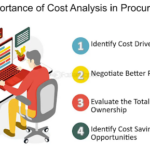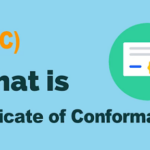Want to reduce costs in product development? Outsourcing product development has become a strategic solution for companies seeking faster time to market and access to global talent pools.
According to a report by Grand View Research, the global outsourced product development market is expected to reach $425.19 billion by 2026, highlighting its growing relevance. While outsourced product development offers numerous benefits, it also presents unique challenges that can hinder project success if not managed effectively.
This blog is a comprehensive guide to the everyday challenges in product outsourcing and strategies to tackle them.
1. Communication Barriers
Are you worried about different time zones or want to tackle the language issue? According to a study by PMI (Project Management Institute), poor communication causes 57% of project failures in outsourcing.
Communication barriers are the primary challenges in outsourcing product development. These hindrances can lead to misunderstandings, project delays, and failure to meet expectations.
Solution: Some of the above communication barriers can be eliminated by using tools such as Slack or even Microsoft Teams for real-time communications. The frequency of meetings means continued concerns are addressed and promotes integration within a shorter period. Cross-cultural differences can be erased by offering training to internal and external employees, enhancing communication between the stakeholders.
2. Quality Assurance Concerns
Maintaining high quality is a common issue in product development outsourcing. A lack of robust quality checks may lead to deliverables that fall short of project requirements.
Solution: Curtailing quality standards/metrics and parameters at the preliminary phase of a project is relevant to eliminating confusion. Also, the adoption of an effective testing strategy creates the means of addressing the problems during the development phase. Those implementing quality assurance procedures cite an approximate 20 percent decrease in defects during product release. These activities go through a once-in-a-while review to check on the level of achievement and conformity to project objectives.
3. Intellectual Property (IP) Risks
To avoid any legal and financial repercussions, it is essential to exercise utmost care when sharing sensitive data with an external team, as this can expose your business to IP theft or misuse.
Solution: Draft contracts that include non-disclosure agreements (NDAs) to protect sensitive information. To minimize risk, limit access to critical data based on the roles and responsibilities of the external team. Over 40% of companies cite IP protection as a critical concern when working with an outsourcing product development company. Conducting regular security audits to ensure that the outsourcing team complies with IP protection measures.
4. Hidden Costs
Outsourcing benefits cost reduction, but unforeseen expenses can erode expected savings.
Solution: Hidden charges can be avoided by negotiating agreements that specify all costs, including potential contingencies to avoid hidden charges. Evolving projects ensure cost effectiveness through the time and material model. Companies that implement detailed cost monitoring save an average of 15% on outsourcing projects. Project management software helps track budgets and expenses in real time, minimizing financial surprises.
5. Loss of Control
Sometimes, the external team makes decisions that may not align with your vision. This perceived loss of control is a serious drawback of outsourcing.
Solution Participate in critical decisions through discussions and reviews. Define clear roles and set explicit expectations for responsibilities and decision-making processes. The project should be divided into faces with clear mind stones, and progress should be monitored effectively to avoid losing control.
6. Security Risks
Hiring an outsourcing team means that security risk is inevitable. This includes sharing sensitive data, data breaches, and cyber threat risks that are pretty common. Data breaches cost businesses an average of $4.35 million per incident in 2023
Solution: Information can be secured by implementing advanced encryption methods and secure data-sharing platforms to safeguard information. Evaluate the security practices of the potential outsourcing partner before onboarding to avoid security threats. Regularly assess and improve the security measures implemented by your outsourcing product development company.
7. Misalignment of Objectives
Aligned objectives between your company and the product development team are necessary to prevent the project from derailing.
Solution: Establishing well-documented goals and setting success criteria and timelines at the start of the project avoids misaligned objectives. Ongoing feedback creates mechanisms to ensure alignment and adaptability, whereas tools such as Trello and Slack also help maintain visibility and synchronize efforts between teams.
8. Vendor Dependency
Companies should not over-rely on a single outsourcing product development company, which can pose risks, significantly if the vendor underperforms or halts operations.
Solution: Coordinate with multiple vendors to minimize risk and ensure continuity. Also, retain critical project knowledge within your organization to reduce Reliance on vendors. Companies with exit strategies reduce vendor-related risks by 30%. Plans help ensure a smooth transition if the vendor changes.
9. Legal and Compliance Issues
Operating in different jurisdictions can lead to legal and compliance challenges, especially concerning labor laws and industry regulations.
Solution: Engage legal experts to navigate regulatory requirements in the outsourcing partner’s region. Incorporate specific compliance obligations in contracts to ensure adherence. Conduct periodic evaluations to verify that the outsourcing partner meets all legal requirements.
Conclusion
While product development outsourcing offers significant benefits, it requires careful planning to navigate potential challenges effectively. Businesses can maximize the advantages of outsourced product development by addressing communication barriers, maintaining quality standards, and safeguarding intellectual property. Implementing these strategies will help your organization leverage external teams and achieve your project goals successfully.









